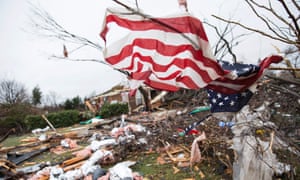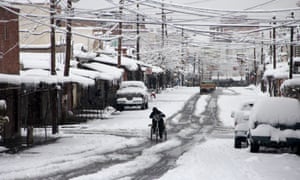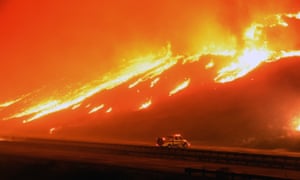The extreme weather events around the world over Christmas has lent yet
more weight to the idea that the world’s climate is changing
 |
| An American flag seen in the aftermath of a tornado in Rowlett, Texas. |
Weather and climate are, of course, very different things. But the
sheer concentration of extreme weather events around the world over the
Christmas period has lent yet more weight to the idea that the world’s
climate is changing, even if the effects are currently exacerbated by the effects of El Niño.
Thousands of homes in the north of England have been affected by severe flooding, some for the second or even third time in the past few years.
In South America, where El Niño flooding
has been been responsible for at least eight deaths, more than 144,000
people have been forced to flee their homes in Paraguay, at least 20,000
in Argentina and several thousand in Uruguay and southern Brazil.
The floods were caused by heavy rains and bulging rivers over the
last several days and come at the beginning of the southern hemisphere’s
summer months. That means evacuees were also dealing with heat,
humidity, mosquitoes and snakes that thrive in swamp-like conditions.
Climate experts said on Monday that the current El Nino was the strongest ever measured.
“It is probably the most powerful in the last 100 years,” said Jerome
Lecou, a climate expert at the French weather service Meteo France told
Agence France-Presse, noting that accurate measurements have only
existed since the mid-20th century.
El Ninos, which emerge every four to seven years on average and run
from October through to January, are triggered by a shift in trade winds
across the Pacific around the equator. Warmer surface water that
normally accumulates in the eastern Pacific moves to the west, leading
to heavier rainfall along the west coast of the Americas and
drier-than-usual conditions in Australasia and southeast Asia.
In Australia, a major bushfire on Christmas Day destroyed 116 homes, with many more in the Wye River area now uninhabitable. Bushfires have also hit parts of Western Australia, where temperatures have been above 40C. Flash-flooding has caused havoc in north-west Queensland, while in the Northern Territory,
a woman died after her car got caught in floodwaters that forced the
evacuation of almost 500 people and brought saltwater crocodiles into
remote communities.
 |
| A man rides on a bicycle as it snows in Ciudad Juárez |
But there has been plenty more taking place globally in the way of weather that is various in exceptional ways.
At least 43 people have now died in a massive storm system
which passed across much of the central and southern US, bringing
featuring deadly tornadoes in Texas, flash-floods in Oklahoma and
blizzards in New Mexico. Among the dead were four foreign soldiers
posted to a central Missouri military base.
Governors in both Missouri and New Mexico declared states of
emergency. In the Texan city of Garland, 20 miles north of Dallas, a
tornado with winds of up to 200 miles per hour killed eight people,
damaged 600 houses and businesses and lifted vehicles off roads. “It’s
total devastation,” said Garland police spokesman Pedro Barineau.
 |
| Firefighters tackle a forest fire near the Basque town of Berango, northern Spain. |
At least 13 people in Illinois and Missouri died when they attempted
to drive their cars through flooded waterways and were washed away. The
storms contrast with weather in the northeastern US where unusual warmth
has held off the arrival of winter.
Meanwhile, southern California is coping with the remnants of its own
December wildfires, which torched more than 1,200 acres north of
Ventura. The blaze was sparked by high winds which disrupted power lines
in an oil field, forcing dozens of homes to be evacuated.
With the fires almost out, officials were worried that rain could now
cause landslides on the bare hills. “Gravity’s going to take it where
it wants to go,” said Ventura County fire captain, Mike Lindbery. “And
where it wants to go is down on the highway, across the railroad tracks
and right into whatever is in its way.”
 |
| Fire overruns state Highway 101 near Ventura, California |
There have also been unseasonal winter wildfires in northern and central Spain, which has seen notably warm weather in recent weeks.
Spain’s agriculture ministry deployed three water-dropping planes on
Sunday to battle fires in the northern region of Cantabria and another
plane was dispatched to the central region of Castile and Leon.
The head of the regional government of Cantabria, Miguel Angel
Revilla, said winds of 50mph were fuelling dozens of wildfires, calling
the situation an “absolute emergency”.
The government in the neighbouring region of Asturias said 20
wildfires were burning within its boundaries, including eight which
firefighters had under control. A helicopter battling a fire in Asturias
crashed on Wednesday, killing the pilot.
No comments:
Post a Comment